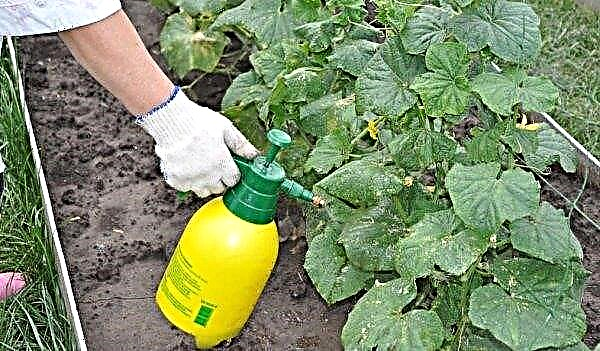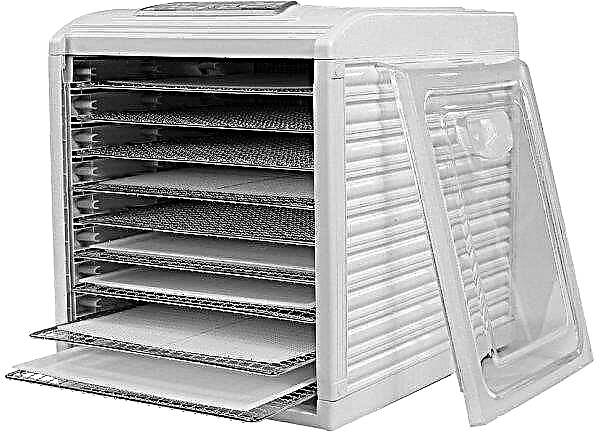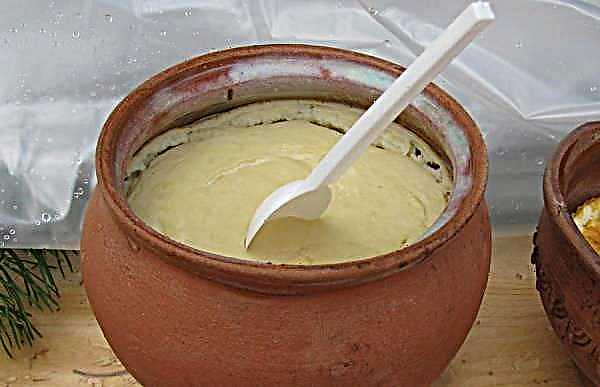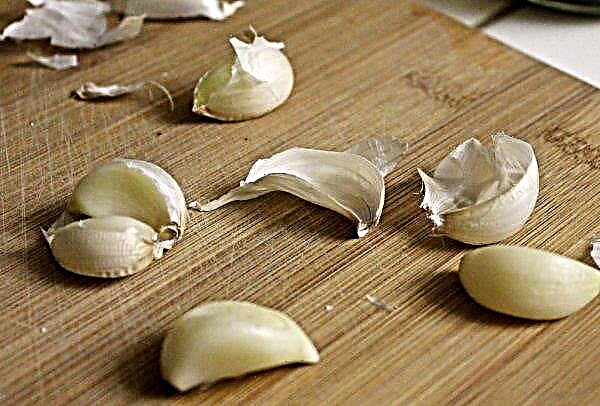Full flowering gives only healthy gladioli, and only such specimens are suitable for reproduction. Compliance with the basic techniques of agricultural technology and the protection of this bulbous plant is necessary for every grower who wants to grow it in his garden. Below is a description and photos of diseases and pests that can most often be found on gladioli.
How often are gladioli exposed to disease?
Cultivated plants are often susceptible to disease and pest attack, and gladioli are no exception to this rule. Most diseases are caused by microorganisms that inhabit the soil, and they penetrate the flower through the roots or spores brought from a diseased plant. Weed infection is also possible. Additional risk factors are adverse weather conditions and neglect of the main agrotechnical methods of growing this crop.
Common problems
There are some of the most common problems with gladioli that can get in the way of any grower. Having seen the characteristic external signs, you should carefully study the plant and choose the appropriate treatment method.
Important! Sick plants should not be thrown into a compost pit! Such gladioli are removed along with a lump of earth and burned.
Why do bulbs rot
Rotting of the bulbs can be caused both by excessive waterlogging of the site and a high level of groundwater, as well as some diseases. Dry rot may be a sign of fusarium, septoria or sclerotiniosis. Penicillus rot can develop if the corms are not properly stored with mechanical damage. All these diseases are of fungal origin, and compliance with the basic preventive measures listed in the corresponding section will significantly reduce the likelihood of their occurrence.
Why are white spots on gladiolus flowers
Spots and strokes of light shades appear on the colors due to the disappearance of the pigment and are signs of the cucumber mosaic virus. On varieties with flowers of dark shades, motley incidence may occur in this case.
Why do gladioli disappear
The flower can hurt and disappear for many reasons, and for treatment it is necessary to accurately determine the source of the problem. Periodic inspection of plants will allow time to notice yellowing at the ends of the leaves or the first spots on the stems and leaves. The death of a plant without signs of disease on the surface can cause the curvularia soil fungus.
Because of what, the stem rots at the base
Rot near the base of the stem may also be a symptom of sclerotiniosis.. In wet weather, a gladiolus infected with a bacterial scab or dry black rot will also have such a sign. To make an accurate diagnosis, you should study the concomitant symptoms that appear on the leaves, buds and flowers of the plant.
Types of Diseases and How to Treat
Plants are susceptible to fungal and viral diseases. Among the problems caused by mushrooms, Fusariosis and various rot are the most dangerous for gladioli. They more often affect plants on acidic soils, and bacterial diseases are more likely to occur on neutral and alkaline soils. Some viruses are also dangerous for gladioli, and no effective treatment has yet been found for them.
Did you know? The name of the flower is associated with the Latin word "gladius", which means "sword", which resemble the leaves of a gladiolus.
Fusarium
The development of the fungus can be provoked by both overmoistening of the soil in warm weather, and overfeeding of the plant with nitrogen, excessive thickening of the beds. Most often, corms are affected after digging and planting, as a result of which depressed red-brown spots appear on them. With a slight damage to the spots, there may not be any spots, but such planting material will most likely not give a sprout.

An infected plant cannot sufficiently develop the root system, foliage bends and thins, it can twist, and then it dries. When a disease is found, the gladiolus is removed with a lump of earth to prevent infection of other plants. Sick corms can also become carriers of the fungus during storage. Despite the efforts of breeders resistant to Fusarium cultivars, it has not yet been bred.
Botritiosis
The causative agent of botrythiosis or gray rot can exist in the earth for a long time. At a temperature of + 15 ... + 18 ° C and high humidity, spores are formed that settle on the surface of plants and penetrate into its tissues. Such a combination of weather conditions is characteristic of the second half of summer, as a result of which mass death of corms during drying and subsequent storage is observed.
When it enters the foliage, the spores of the fungus form small watery spots, followed by their browning. Mucus may occur on the buds, the neck begins to rot and the stem breaks. When the disease falls on the corm, it dims and rots at the apex. Maintaining a healthy appearance of the shell, the bulb can completely rot from the inside, becoming soft and light.If the disease is detected during the growing season, the gladiolus is dug up and destroyed.
Septoria
Septoria or hard rot is often found on moist and heavy soils, whose acidity level is elevated. Possible contamination of the soil and when acid peat is added to the ground. Symptoms can be found below the leaves in the second half of summer, near the end. Small round spots of red-brown shades with dark bordering appear on the sheet plate. The same spots are found on the surface of corms.
A sick gladiolus looks unhealthy, its flowering is inferior. When developing, the disease leads to the complete hardening and blackening of the corm. If only a small area is affected, the rot on the corm can be cut out. Then this place should be sprinkled with charcoal powder and sulfur. Treated in this way, planting material can be stored until spring.
Sclerotinia
In areas with a cool, humid climate, plants are often affected by sclerotiniosis or dry rot. The pathogen fungus is able to maintain vital functions in the earth for 20–25 years. The first signs of the disease are yellowing at the ends of the leaves, as well as in places where they contact the corm. Over time, the stem of the gladiolus rots and breaks, the leaf plate breaks up into fibers interspersed with black spores of the fungus. The corm rots and the plant dies.

Damaged corms are visible by small brown spots, which subsequently combine into large pressed in spots, leading to complete mummification. Small specimens can harden without staining, and if the room has high humidity, a white coating of mycelium with dark spots of spores appears on the spots.
If the damage to the planting material is insignificant, and the storage location is dry enough, corms can survive until spring and give a plant with normal flowering. If infection is suspected, the gladiolus is dug up earlier.Did you know? Before our era, corms of gladioli could be fried or baked, as well as ground with onions for the basis of cakes. Roman warriors also hung them around the neck like an amulet.
Bacterial scab or varnish disease
Bacteria causing scab are found on peat bogs, moist and clay soils with a high level of occurrence of groundwater. Excessive lime exposure is a risk factor for the disease.Signs of scab during the growing season will be red-brown spots on the lower part of the foliage, which, with high humidity, transform into wet rot.

Young foliage turns yellow, and the neck rots. On corms appear spots of red or black shades, under which oval red-brown ulcers with a “varnished” surface are formed.Small affected areas can be cut, treated with carbon powder and sulfur, a solution of potassium permanganate. If the disease progresses, the corm will completely dry out and die.
Bacterial cancer
The disease causes a bacterium, to which other plants are also sensitive (for example, peonies, roses, dahlias). On corms instead of children, tuberous growths begin to appear. Sick plants should be destroyed, and the soil should be sterilized, since the bacterium remains in it for the winter.
Mosaic viruses
Viral diseases spread rapidly. The most affected areas in the southern regions. Most often spread by sucking insects (thrips, aphids, etc.).
Gladioli are affected by mosaic viruses of several varieties:
- cucumber mosaic noticeable mottling and whitish marks on the foliage, whose color becomes much lighter than healthy specimens. Strokes, stripes and spots of white, yellow or silver shade can be found on flowers and buds, varieties with dark-colored flowers are covered with purple or blackish damage. Flowering is inhibited, and then completely stops, corms are getting smaller;

- yellow bean mosaic transforms young leaves of gladiolus with yellow-green spots, best visible in light. The plant lags behind in development, the flowers are smaller and become variegated, mosaic, with unpainted areas;

- tobacco mosaic leaves a blurry yellow stain on the plant, and tomato mosaic it simply inhibits the growth of the plant, without staining its parts.

Gladioli with symptoms of viral infection should be removed immediately, and the instruments used during work should be disinfected.
Pests of gladioli
Gladiolus attacking pests are harmful to other plants. In addition to direct influence, insects are carriers of various diseases. The following are the most dangerous pests for this crop.
Thrips
These small winged insects can completely destroy both a vegetative plant and planting material during storage. One female can produce more than 20 eggs, and the number of such clutches per season can reach 5–6. The thrips larvae, like adults, suck out the plant sap through the punctures they inflicted in the stems, leaves and corms. The first sign of thrips damage will be whitish spots on the leaves, then complete drying will occur.
If insects attacked the buds and flowers, holes will be visible along the edges of the petals, and the flowers will begin to lose color or may not open at all.When the ambient temperature drops below + 10 ° C, thrips goes down to the corms. Sucking juices from them during storage, it leads to the formation of brown spots and further drying. The pest dies at a temperature of -3 ° C and does not remain to hibernate in the ground.

In addition to the preventive measures described in the relevant section, insecticide spraying is used to control thrips ("Decis", "Actelik", "Confidor", etc.), starting processing in the phase of the appearance of 4-5 leaves, then when the peduncles come out and the buds are stained. Drugs alternate to avoid pest adaptability. Plant-based formulations are also used, for example, infusions of celandine or tobacco. Corms are stored at a temperature not exceeding + 8 ° C to prevent thrips activity.
Important! Long-term planting of wild strawberries leaves a significant number of nutcrackers and their larvae, so gladioli cannot be planted in such a place.
Wireworm
The larva of the striped nutcracker (wireworm) reaches a length of 1-2 cm and is protected by a hard shell. It bites into the corm and also affects the underground part of the stem. It leads to infection of the plant with bacterial diseases.

Adult beetles feed on weeds (especially wheat grass), so cleaning the site is the main way to combat this insect. Also use bait from chopped beets or other root crops, which are destroyed after 2 days, with the larvae already introduced.
Medvedka
This large insect lives in the soil and gnaws the underground part of many plants. Most often, it can be found in the moist nutrient soils of the southern regions. Gladioli damaged by a bear turn yellow and die.

To combat the bear, bait with zinc phosphide is used, 30% of malathos are introduced into the ground. Insects are also removed by loosening the soil and digging compost heaps in the winter, where the bear prefers to take refuge for the winter.
Cabbage scoop
The caterpillars of this pest eat the leaves and buds of the plant. The insect usually feeds at night and leaves oblong-shaped openings in the foliage and round on the buds. An effective control measure is the treatment with chlorophos solution (0.2–0.3%) or manual collection of caterpillars at night (with a flashlight).
Slug
Slugs are found in wet areas, near ponds and in wetlands. It is easy to identify their traces by mucus with a silvery sheen. They eat leaves and corms early in the morning, after sunset and at night. In the daytime, slugs hide in the shade (under leaves, clods of earth, etc.).
To destroy pests, bait is laid out in the form of pieces of bark or other shelters from the sun, where slugs will crawl and where they can then be collected. Fermented drinks (kvass or beer) in shallow containers, which are pressed into the ground to the ground level, can also be bait.
Important! An effective remedy for slugs is to dust the tracks with tobacco dust or ash.
Aphid
Small green pests suck juice from all parts of the plant and carry viral diseases. To combat them, you can apply the treatment of the infusion of hot red pepper with laundry soap. To prepare it, 100 g of fruits are boiled in 1.5 l of water, then the mixture is insisted for 2-3 hours, filtered and diluted in 10 l of water with the addition of 40 g of grated soap.
Prevention Methods
The prevention of diseases and pests includes both agrotechnical techniques and various treatments of plants and planting material during the growing season and storage.
To reduce the risk of damage to gladioli, you should adhere to such recommendations for planting and care:
- it is necessary to observe the rotation of crops during planting and return gladioli to the same bed only after 4-5 years;
- timely remove diseased plants and monitor the condition of corms in storage;
- do not plant the crop in damp and cold areas, as well as in unventilated places;
- joint plantings with legumes help fight wireworms, the bear and thrips do not like garlic, and annual phytoncides (marigolds, mustard, nasturtium, etc.) help to resist fusarium and rot;
- mulching with pine needles or sphagnum moss shows good results in disease prevention;
- early harvesting of corms will help protect plants from thrips infection;
- storage in a dry room at a temperature not exceeding + 8 ° C;
- Autumn digging of the bed and the complete removal of plant debris.

You can do the following preventive treatments of the plant:
- spraying with infusion of garlic (100 g per 10 l of water) or green parts of celandine and calendula (1: 2, leave for 2-3 days, then add 50 g of washing powder per 10 l of infusion);
- disinfection of corms before planting in a solution of foundationazole (30 min) or infusion of marigolds (8-10 hours), as well as in a solution of soda (50 g per 10 l of water) and potassium permanganate (30 g per 10 l of water) for 1-2 hours ;
- heating of planting material in water at a temperature of + 55 ° C for half an hour;
- watering the planting with a solution of potassium permanganate (5 g per 10 l of water) in the early days of autumn.

Compliance with the basic rules of planting and care, as well as timely monitoring of vegetative plants and planting material will allow you to get healthy gladioli with lush flowering. To preserve planting material, the corms should be dug out on time and stored in suitable conditions, rejecting diseased specimens.















